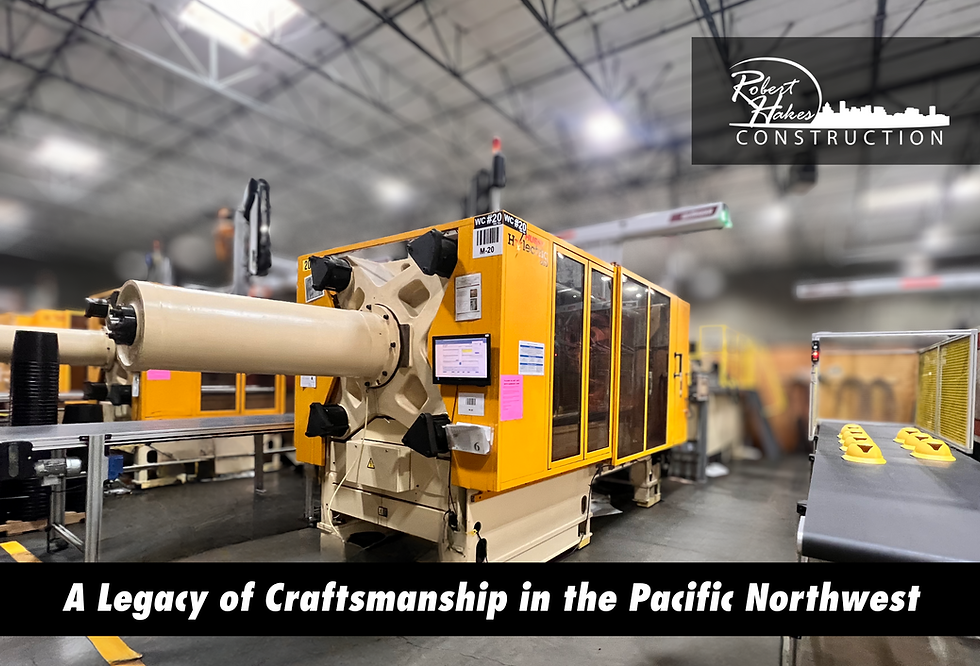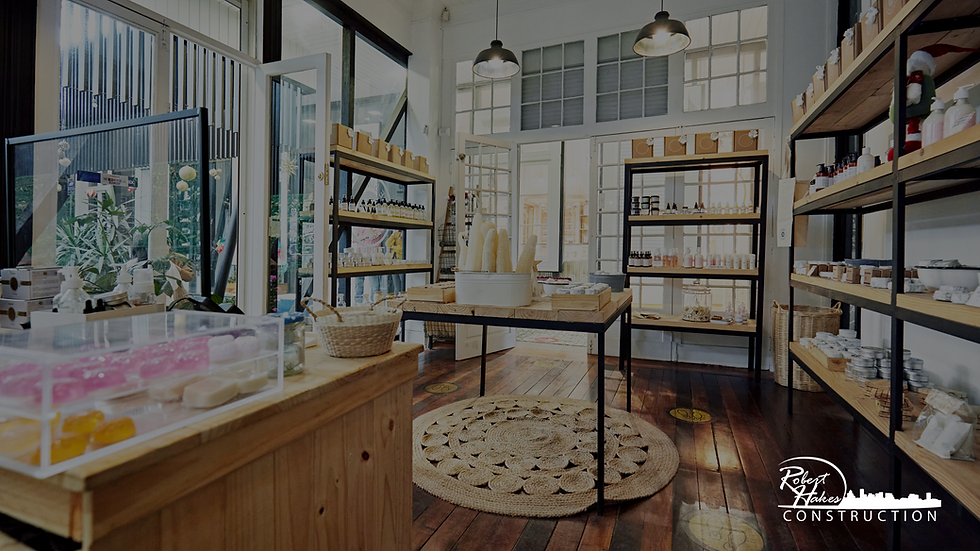What Is Commercial Tenant Improvement?
- Robert Hakes Construction
- Apr 3
- 4 min read
When you move your business into a new building, you’ll likely discover that there’s a lot you need to do. Most commercial buildings are left in shell condition—that is, left in a simple, minimalist state—so that new tenants can alter them as they see fit. Altering your building into your desired condition is known as commercial tenant improvement, and this article will discuss how it works.
What’s Involved
Commercial tenant improvement is a broad term. Essentially, it involves everything you might need to do to transform an empty building into a business. This includes the basics: lighting, painting, carpets or other flooring, and any other essentials. It also includes more specific improvements that transform the building into something special.
For example, if your building will become a restaurant, then your tenant improvements will have to include a kitchen, including stoves, large sinks, and so forth. If, on the other hand, you’re creating a storefront, your needs will be different. You might need to add more walls—or take walls out—and you may need to alter the windows. When you move your business into a new building or rental space, you’ll have to decide what alterations need to be made.
Who Pays for Everything?
When considering budgeting for your tenant improvements, you’ll need to take a few factors into account. First, know that in many cases, your landlord may actually pay the cost for your improvements. They may consider this an investment. If this is the case, however, the landlord will also likely keep the materials they have purchased when you move out of the building.
In some cases, your landlord may issue you a tenant allowance: money that you can use to pay for tenant improvements yourself. In this case, however, you may have to pay taxes on your tenant allowance, as it’s considered a form of income. One way to avoid the tax issue is to ask if your landlord can offer you a rent discount while you’re working on improving the space. You can then put the savings toward your improvements, rather than accepting money from your landlord to do so.
In some cases, your landlord may do all the improvement work before you move in. This may be easier for you, but you will also have to sacrifice a great deal of creative freedom before you move in. You won’t be able to make major decisions regarding your improvements. For this reason, many business owners opt not to do it this way.
In other cases, you’ll have to pay for your improvements yourself. Or you may have to pay the difference beyond the costs that are covered by your tenant allowance. You will have to work out a deal with your landlord, then create a budget from there.

Do I Keep the Materials Added During Improvements?
As we’ve mentioned above, if your landlord pays for all of your business’s improvements, you likely won’t have a claim to them when you move out. This means, if you have, for example, a restaurant, you won’t be able to take the oven with you when you move to a new building. This can prove to be a bit of a grey area if you split the costs, however.
You’ll need to check your local ordinances to see what you can and cannot keep. In many cases, local laws state that certain items are considered “fixtures,” meaning they’re legally part of the property. Air conditioners, sinks, and lighting are usually considered to be fixtures and are permanently part of the property. Other items, which can be removed more easily, may be considered the property of your business. Once again, it’s a good idea to check your local laws to ensure that you’re doing everything legally.
Can I Finance Commercial Tenant Improvement?
If you need to come up with the money to pay for the improvements yourself, you may be able to finance these costs. Even if your landlord is covering most of the costs and you just have to pay the difference, you might end up needing to come up with a considerable amount of money. If this is the case, consider looking into a small business loan or a capital loan in order to get the money quickly. This way, you can start the improvements very quickly, without having to worry about coming up with the money yourself first. Discuss your loan possibilities with your bank.
Making sure all of your documentation is in proper order will save you many headaches in the future.
Who Will Do the Improvements?
Finding the right company to perform the improvements for you can be a somewhat difficult task. Not just because it’s critical to find competent contractors who can perform the work to your exact specifications, but also because the construction work required to improve your business can be disruptive. Choose the wrong company to do the work for you, and not only may you find your business to be limited in its ability to earn an income, your neighbors may also be disrupted as well.
That’s why it’s a good idea to find a company like Robert Hakes Construction, which works in phases as the team does the job. This means that you may be able to continue to run your business as the work is being done. It will also minimize the chances of causing problems with the businesses that surround yours.
It’s also critical to find an experienced contractor to perform the work for you. This will help to ensure the work is done quickly, meeting deadlines, while also being held to strict standards for quality. Ensuring your construction company has all its paperwork in line, including insurance documents, is also critical. Once again, a company like Robert Hakes Construction is an excellent choice when you’re attempting to meet these criteria.




Comments